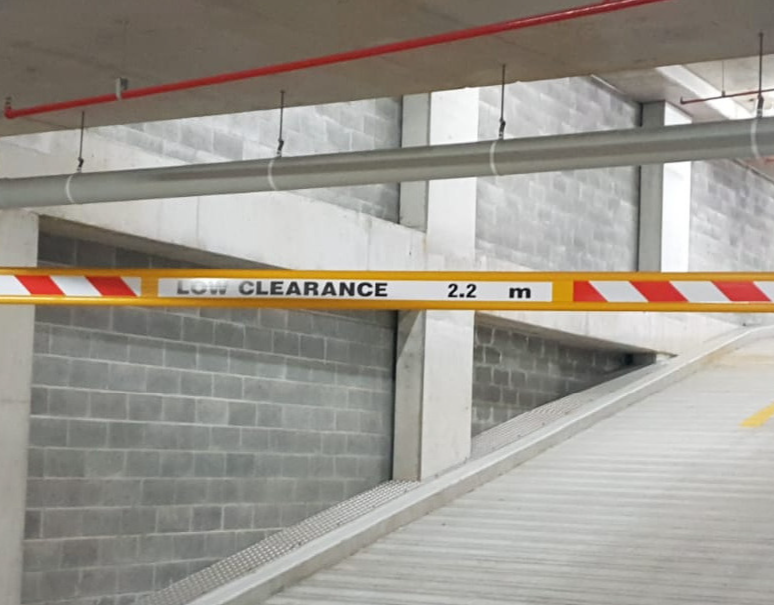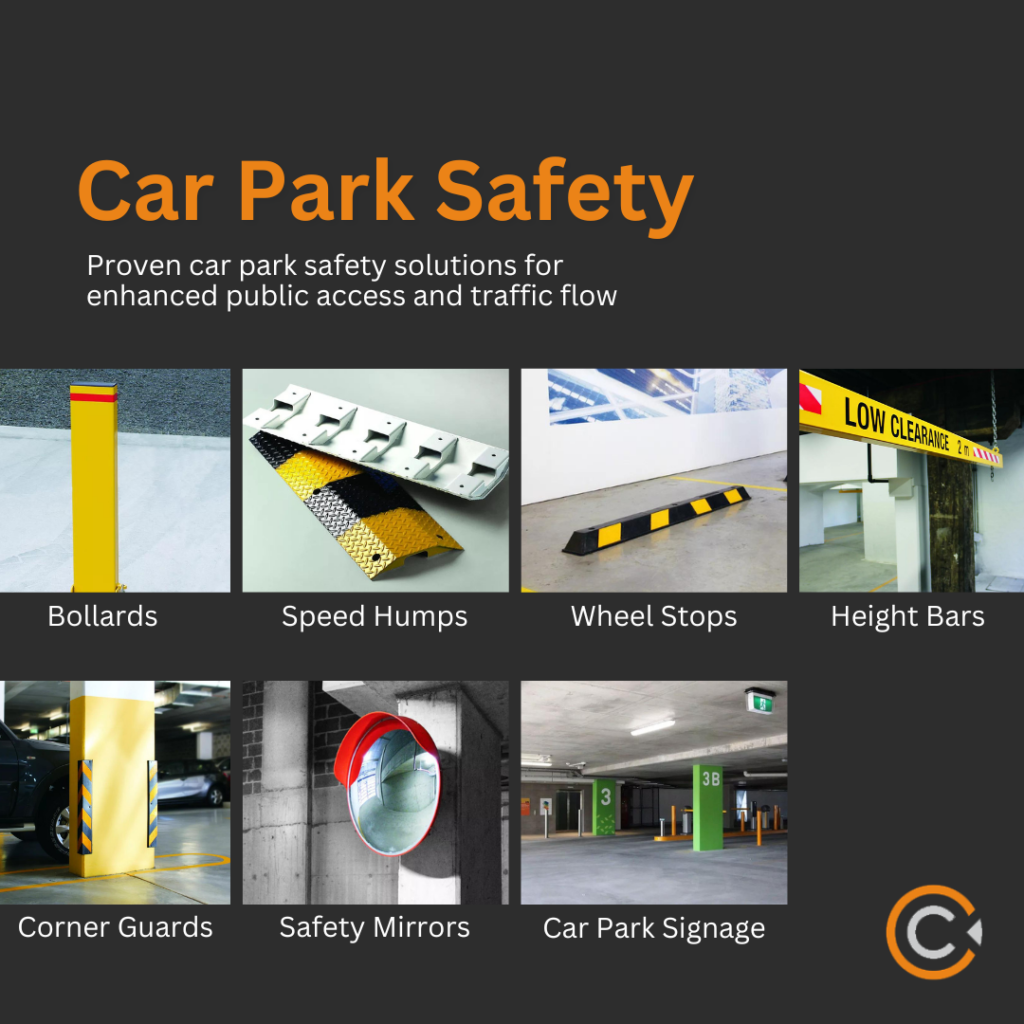What are the standard parking requirements in Australia?
Parking requirements in Australia are guided by the Australian Standards under AS 2890, covering requirements for different developments, accessibility purposes, and various car park safety products. These standards, alongside local council regulations, are set in place to ensure that car parking facilities are safe, accessible and adequate for the needs of all intended users.
Parking regulations, both mandatory and voluntary guidelines, hold a significant role in urban planning and transportation management. They strike a balance between ensuring sufficient parking for users while fostering sustainable urban living and facilitating future development. Well-designed parking provisions are essential for efficient traffic management, making the most of land resources, and minimising negative environmental effects. These regulations balance the needs of different types of land uses (residential, commercial, industrial, etc.) and ensure that adequate parking is provided, reducing the impact of congestion on surrounding areas.
In this blog, we’ll explore the main types of parking spaces, parking requirements set out by the Australian Standards, as well as emerging trends and future considerations.
Types of parking spaces

There are two main types of parking spaces, namely on-site parking and off-site parking.
On-site parking
With parking facilities located within the premises of a development, these can be further categorised into residential parking, commercial parking, and public parking.
Off-site parking
These spaces are located outside the main premises of a development, including shared parking facilities and remote parking areas.
Other types of parking spaces can include, on and off-street parking as well as temporary and event parking.
Key factors influencing parking requirements

To better understand the determining factors behind parking requirements, there are some key areas to explore.
Type of Land Use
Different types of developments require varying amounts of parking. Common categories include:
- Residential: Single homes, apartments, and mixed-use residential developments typically have different parking needs based on occupancy rates, dwelling sizes, and household vehicles.
- Commercial: Retail, restaurants, and office spaces usually require parking for customers, employees, and service vehicles. The scale of the business and customer volume can affect the parking demand.
- Industrial: Manufacturing, warehouses, or distribution centres have specific requirements for service vehicles, employee parking, and space for delivery trucks.
- Institutional: Hospitals, schools, and government buildings need parking to accommodate staff, visitors, and service vehicles.
Local zoning regulations
Local zoning regulations determine the minimum number of parking spaces required by the type of development and its intended purpose.
These regulations play a crucial role in controlling the use of land by balancing the need for parking with other urban planning requirements such as reducing traffic congestion and promoting sustainable growth.
Accessibility considerations
Accessibility considerations ensure safe and equal access for all users, including disabled parking.
Covered by the Disability Discrimination Act 1992 and the Disability (Access to Premises – Buildings) Standards 2010, accessibility regulations outline important factors such as the minimum number of accessible parking spaces, their location, required space dimensions, access routes, and more.
Vehicle types and sizes
Accommodating diverse vehicle types and sizes — like cars, motorcycles, bicycles, and service vehicles — also influences a development’s parking requirements.
Some special inclusions to accommodate different vehicle types include:
- specialised bike racks and motorcycle spaces
- accessible parking spaces
- EV charging stations
- Rideshare pick-up and drop-off areas
Relevant regulations and standards ensure that parking spaces are appropriately sized to meet the needs of various users and vehicle types.
Public Transportation Accessibility
Developments with easy access to public transportation, such as train stations, tram stops, or bus routes, may have reduced parking requirements. The availability of alternative transportation reduces reliance on private cars and, therefore, the need for expansive parking space.
Parking requirements in compliance with Australian Standards
The Australian Standards, commonly referred to as AS or AS/NZS (Australian/ New Zealand Standards), are a set of specifications and design procedures used to ensure the safety, quality and consistency of products, services and systems in Australia. There are two types of standards — mandatory and voluntary.
When it comes to parking, the Australian Standards has specific requirements for different types of developments. These include residential buildings and complexes, commercial and office spaces, retail establishments, educational institutions, entertainment venues, healthcare facilities, and public spaces.
There are also various on-street and off-street parking guidelines for car, bicycle and motorcycle parking facilities.
The Australian Standards for the design and layout of parking facilities across various developments are outlined under the following AS 2890 guidelines:
- AS 2890.1: Off-street car parking
- AS 2890.2: On-street parking facilities
- AS 2890.3: Bicycle parking facilities
- AS 2890.4: Tandem parking
- AS 2890.5: Parking for people with disabilities
- AS 2890.6: Off-street parking for bicycles
- AS 2890.7: Parking facilities for motorcycles
- AS 2890.10: Parking for commercial vehicles

The Australian Standards also cover guidelines for specific car park safety products including:
- Car Park Bollards – AS 2890.1:2004 and AS 2890.3:1993 provide guidelines for the design, installation, and maintenance of bollards across off-street car parking and bicycle parking facilities. Learn more about Australian Standards for car park bollards in our blog.
- Speed Humps – AS 2890.1:2004 covers guidelines for the design and installation of speed humps in off-street car parking facilities as speed reduction measures.
- Wheel Stops – AS 2890.1:2004 lists guidelines for the design and installation of wheel stops in off-street car parks to prevent vehicles from overrunning parking spaces.
Classic Architectural Group offers architecturally designed, car park safety products compliant with Australian Standards spanning height bars, corner guards, safety mirrors, and car park signage.
Compliance and enforcement of parking requirements

Considering most car park facilities feature shared access, the enforcement of and expected compliance with parking requirements is a shared responsibility.
Developers are responsible for providing the required number of parking spaces based on local council regulations and permits. Property owners are responsible for the ongoing maintenance and management of parking facilities to ensure safety and efficiency for all users.
On the other hand, tenants and public users are expected to comply with all parking regulations and use the allocated parking spaces appropriately.
To encourage compliance, local councils and property owners can enforce fines or the loss of parking privileges for repeated offences.
Evolving parking trends and future considerations to note
While we’ve covered current best practices according to Australian Standards, it’s important to consider future parking trends.
With a growing population and ever-evolving technology, two key areas are gaining popularity.
Sustainability-focused parking practices
Minimising carbon emissions, there is an increasing number of electric vehicles on the road. To accommodate these users and encourage increased adoption, building professionals should consider installing Electrical vehicle (EV) charging stations.
Aside from electric vehicles, shared parking initiatives and ride-sharing options are also becoming more popular due to their affordability and convenience. Optimising parking space utilisation, building professionals can also design and designate waiting bays for ride-share users.
Integration of smart parking technology
The rising integration of smart technologies in parking management is another trend to watch. Ensuring efficient parking space allocation, the use of smart sensors and data analytics can be used to monitor parking occupancy as well as direct arriving drivers to vacant parking bays.
Used for enhanced security, monitoring and billing, License Plate Recognition (LPR) technology can be used to capture license plate numbers as vehicles enter and exit parking facilities.
Similarly, RFID and NFC technology can facilitate better access control and payment options, allowing users to tap their RFID/NFC-enabled smartphones or cards to gain entry or make payments upon departure.
Ensure your car parking project’s success and compliance with Classic’s leading expertise
From reducing traffic congestion to supporting sustainable development, compliance with the Australian Standards ensures effective and safe parking management for developers, owners and users. Keeping up with population density across growing areas, properly designing parking spaces supports the shared objective of creating more accessible and environmentally friendly cities.
Specialising in architecturally designed public access and safety solutions, Classic offers a complete suite of car park safety products.

Supporting you from consultation and design to supply and installation, our expert team can help you get a step ahead with your car parking project.
For more inspiration, explore our latest projects – you can filter projects by relevant industry, location and/or project type.
For a tailored quote, product samples and all other enquiries, please get in touch with us by calling 1300 244 377 or emailing us at info@classic-arch.com.




